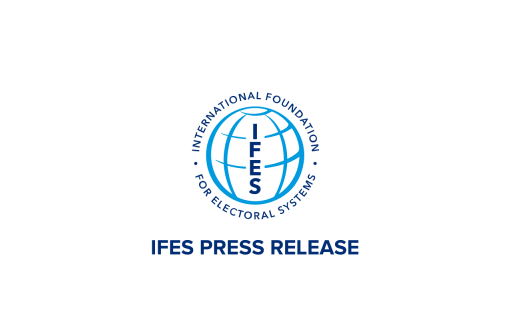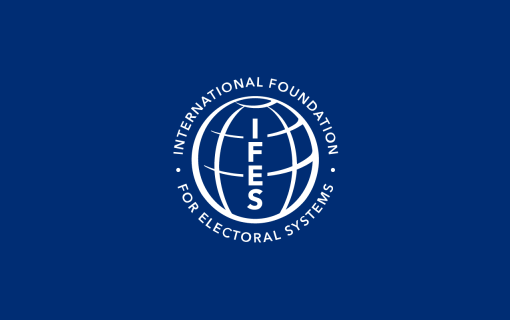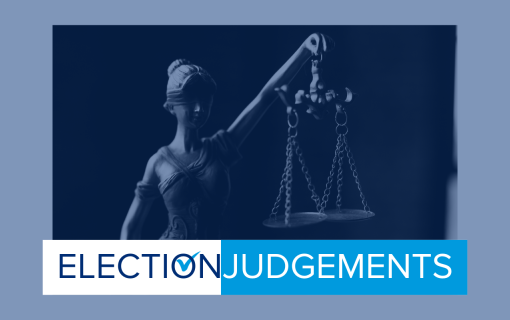Change on the Horizon: Kenya Revamps System for Enhanced Elections
Following the 2007 general elections that resulted in political violence, Kenya has adopted a new constitution and made widespread modifications to its electoral system. Mike Yard, IFES Chief of Party in Kenya, provides insight into the changes that have taken place and the preparations that are underway ahead of the March 2013 elections.
A number of changes have taken place in Kenya since the 2007 election. Most prominently, a new constitution has been adopted and a new election commission has emerged. Could you give us a quick run-through of the major political and legal changes that will affect the upcoming elections?
The new constitution envisions a much broader democratic process that increases representation of women, youth, persons with disabilities and other underrepresented or marginalized groups. The constitution and subsequent laws and regulations give greater authority to the Independent Election and Boundaries Commission (IEBC). They also strengthen political party structures and impose ethical and educational requirements, as well as financial disclosure requirements for those who seek public office.
The law seeks to move Kenya to a political process that is less ethnic-based by requiring that a presidential candidate must get more than 50 percent of the vote in total and at least 25 percent of the vote in at least half of the nation’s counties in order to be elected in a first-round poll.
Overall, the laws create greater dialogue between the political parties, civil society organizations and the election commission.
Further, the constitution envisions devolution of power from a central government to county and ward levels in an attempt to increase protections for communities and minorities. This devolution enhances separation of powers and makes services more readily available at local levels.
To a great extent, the democratic vision of the constitution is to redistribute power away from political elite who have increasingly controlled national resources and decision making. These visions are far-reaching, and reforms will not be completely realized by simply passing a constitution. It will take several election cycles to determine to what extent these goals can become reality.
This September, IFES awarded Maimuna Mwidau, a women’s activist from Kenya, the 2012 Charles T. Manatt Democracy Award. Because of her efforts, and those of countless Kenyan women like her, the new Kenyan constitution requires no more than two-thirds of the Kenyan parliament be of the same gender. Do we know how this gender requirement will be fulfilled?
This is currently a controversial issue in Kenya, with many politicians and political parties claiming it is impossible to meet this requirement in this election cycle.
On December 12, the Supreme Court of Kenya ruled that, due to conflicting language in the constitution and in the absence of legislation to clarify how the quota would be fulfilled, the gender requirement imposed by the constitution cannot be implemented by 2013. But it will be fully imposed by August 2015. In a dissenting opinion, Chief Justice Willie Mutunga stated, “Parliament by its silence cannot deprive the women of this country the right to equal representation. In the event that Parliament fails to implement that principle any of the elected houses will be unconstitutional.”
What is the voter registration process like for citizens under the new system? Will their photos and fingerprints be taken?
The IEBC decided to implement biometrics both for voter registration and for validation of voters on Election Day. The voter registration system allows the registrar to enter data on the voter and to capture both a photo and fingerprints from all 10 fingers. This data will be checked using an automated fingerprint identification system (AFIS) to detect any duplicates. The data will then be used on Election Day to validate each voter through the use of an electronic poll book. This provides several advantages. It acts as a deterrent against impersonation, and also provides the ability to track how many people voted at any point throughout the day. This data can then be used to help detect any attempt at ballot-box stuffing or overreporting of the number of votes cast. The data can be analyzed post-election to do demographic breakdowns of who voted, segmented by age and gender.
Given the delays in the procurement of the registration kits, will voter registration be completed on schedule?
At the time of this interview, the registration period has just ended, with 12.7 million voters registered out of a target of 18 million announced by IEBC.
Several factors have been cited for the low turnout up to this point. First is the human tendency to procrastinate. In every voter registration exercise there are a significant number of people who wait until the last minute to register, but in this case, there seems also to be a combination of apathy and antipathy about the upcoming elections. There has been pressure on the IEBC to extend the period of registration, but the election calendar is very tight, so extension is unlikely.
A big issue during the 2007 elections was the slow speed at which the results were transmitted from polling stations to the counting center. As a result, there has been a massive upgrade in the results transmission system and a commitment made to a new media center and results display for the upcoming election. Please tell us about these upgrades and take us through the steps that will occur once voting stations close on the evening of March 4.
IFES helped design a system in 2010 for the results transmission system for the constitutional referendum, the first election exercise since the post-election violence that resulted from the 2007 election. There was a lot of anxiety in the country that this could be a replay of those events if the Interim Independent Electoral Commission did not provide an efficient and transparent system for reporting results.
The system we designed used a Java application on mobile phones to transmit results directly from each polling station to a central server. As a result of this system the “No” side conceded before 11:00 p.m., and Kenyans slept peacefully knowing they had a new constitution.
This system has been updated and used in several by-elections since 2010, and in every case the losing candidates have accepted defeat, usually based on the electronically transmitted provisional results, and before the final results were certified.
In March 2013, Kenya will, for the first time, conduct six different elections in one day, with some having potentially up to 52 candidates. This creates new challenges for the systems to transmit results data and display that data in meaningful ways. IFES is working with IEBC on the results transmission system, which expands on what has been used in the referendum and by-elections. The key difference is that the system will be operated by a polling clerk while the votes are being counted, rather than waiting until the results forms have been completed.
We are also collaborating with the IEBC and Google on defining the visual display of the results.
How are political parties being engaged to help prevent situations that could incite violence?
The Political Parties Act provides for the establishment of Political Parties Liaison Committees at national and county levels, which meet regularly to provide input to IEBC and the Office of the Registrar of Political Parties. This allows the parties to address areas of dissatisfaction and seek consensus on how the election process will be conducted.
IFES has worked with both IEBC and the judiciary to establish mechanisms for timely resolution of election disputes, and we are working on a guide to the legal recourse that parties, candidates and voters will have available in case of any disputes over the process or results.
NDI has suggested bringing together key party leaders and candidates in a forum where we could focus on the legal means available to challenge any electoral process and inviting the candidates to sign a pledge that in case of any dispute they will only respond to such disputes by legal means. IFES supports this proposal, and if it goes forward, will provide assistance in training participants in legal election dispute resolution mechanisms.
There has been a lot of debate around diaspora voting. IFES has offered guidance on the strengths and weaknesses, as well as the logistics of providing out-of-country voting. What are the current plans for diaspora voting?
The constitution mandates that the IEBC will progressively enable voting for Kenyans who are out of the country. There have been strong demands made by members of the Kenyan diaspora that they be allowed to vote in the 2013 elections. In November, the Minister of Justice announced there would be no voting by Kenyans outside the country. The IEBC quickly refuted that announcement, asserting that the IEBC is the only body with authority to make any decision related to elections. However, at that time, they also announced that they would only be able to implement voting by Kenyans living in East Africa, specifically in Uganda, Tanzania, Rwanda and Burundi. Even this may prove difficult, as issues have been raised about security costs and registration in these countries. Registration that was originally announced to begin on December 10 has been delayed.
How is the population being informed of all the changes that are taking place, including that, for the first time ever, Kenyans might vote in a run-off election?
Election planning in 2011-12 has had three major phases: boundary delimitation, voter registration and conduct of the actual elections. The bulk of voter education up to this point has focused on the first two of these phases. As voter registration concludes, the new focus is the election – how to vote, what offices are being elected and the issue of a run-off election.
Several innovative approaches are being taken to help inform Kenyans about the changes in the electoral process. Uongozi (Swahili word for leadership) is a reality-based TV show that pits 48 candidates, one from each of the 47 counties and one from the Kenyan diaspora, against each other in a mock political campaign that will culminate in a debate featuring the three finalists and a “run-off election.”
Shujaaz FM is a multimedia program that started as a comic book about an unemployed Kenyan youth who starts an underground radio station broadcasting information on political and social issues, as well as voter education messages. His radio broadcasts are now being played on radio stations throughout Kenya. The fictitious main character, DJ Boyie, has over 20,000 followers on Facebook, and an SMS number allows Kenyan youth to send text messages to different characters in the series and get information on the election.
Technology is being adopted in almost every aspect of this election. In late 2013, will we be looking toward Kenya as a global model for the introduction of technology into the electoral process?
I hope not. Because of the aggressive schedule the IEBC has had to face, they have implemented many new technologies in a very short time frame in a way that should not be seen as a model for other election management bodies. There is still a significant risk of failure in many of these technologies. Whenever possible, new tools and processes should be introduced into elections in a more gradual approach that allows adequate time for careful planning, feasibility studies, pilot testing and implementation in smaller phases.
However, if Kenya succeeds with its technology initiatives, it will be an excellent case study for how technologies can be used to support elections, and will offer many lessons about how to proceed.









